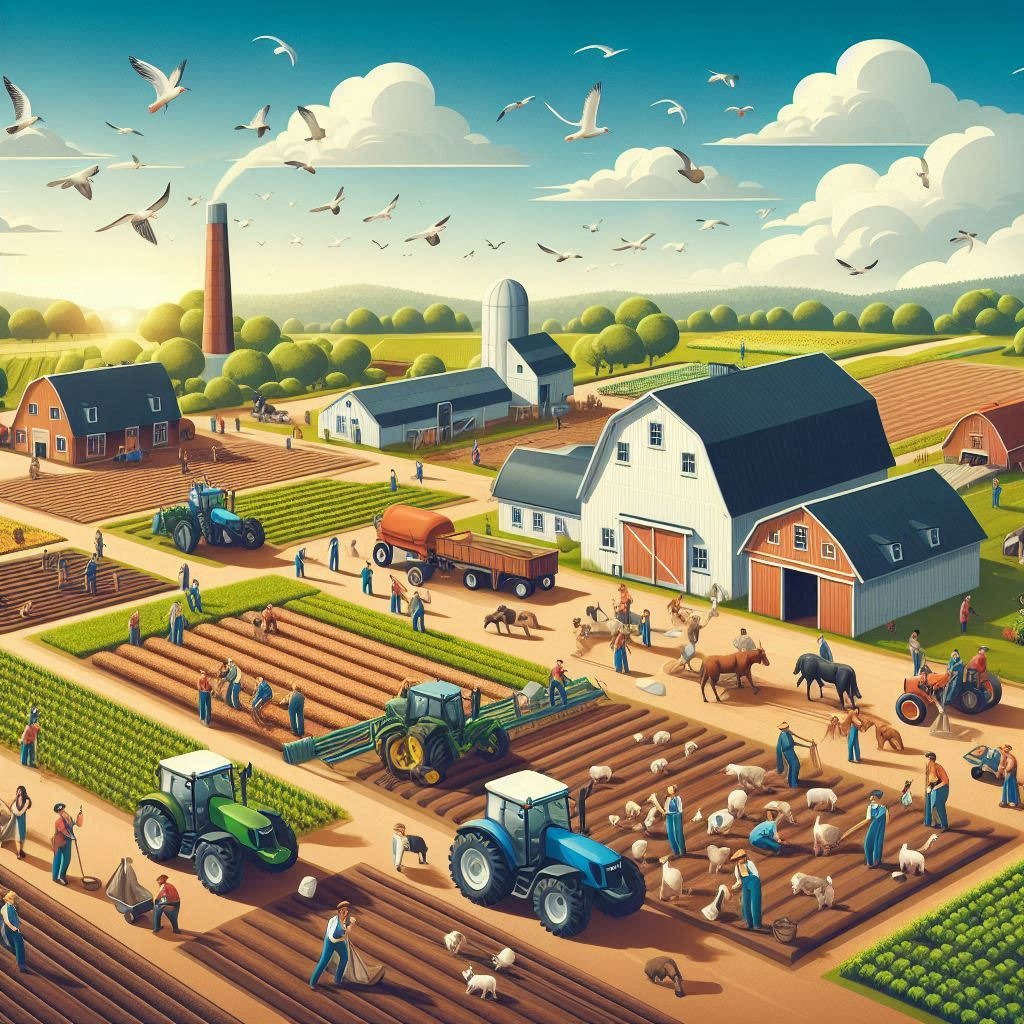Introduction
In Zambia, both peasant and commercial farmers often clear vast tracts of land to cultivate maize, a staple crop. This practice, while essential for food security, significantly contributes to deforestation and climate change. However, there are techniques that farmers can adopt to grow trees near their farmland without compromising their crop yields. These sustainable agroforestry practices can help mitigate climate change while maintaining agricultural productivity.

Benefits of Agroforestry
Agroforestry, the integration of trees and shrubs into crop and livestock systems, offers numerous benefits:
- Enhanced Soil Health: Trees help prevent soil erosion, improve water retention, and contribute organic matter, enhancing soil fertility.
- Biodiversity: Trees provide habitats for various species, promoting biodiversity.
- Climate Resilience: Trees act as windbreaks, reducing crop damage from strong winds and stabilizing local microclimates.
- Carbon Sequestration: Trees absorb carbon dioxide, helping mitigate climate change.
Techniques for Integrating Trees with Crops
- Alley Cropping:
- Description: Planting rows of trees or shrubs between rows of crops.
- Benefits: Trees improve soil structure and fertility, while crops benefit from reduced erosion and better moisture retention.
- Implementation: Select tree species that do not compete heavily with crops for light, water, or nutrients. Leguminous trees are particularly beneficial as they fix nitrogen in the soil.
- Windbreaks:
- Description: Planting lines of trees around the edges of crop fields.
- Benefits: Windbreaks protect crops from wind damage, reduce soil erosion, and provide habitats for beneficial insects and birds.
- Implementation: Use fast-growing, hardy tree species. Ensure adequate spacing to prevent shading of crops.
- Boundary Planting:
- Description: Planting trees along the boundaries of farmland.
- Benefits: Defines property boundaries, reduces soil erosion, and provides additional resources such as fruits, nuts, or firewood.
- Implementation: Choose multipurpose tree species that offer additional benefits beyond environmental protection.
- Contour Farming with Trees:
- Description: Planting trees along contour lines on sloped land.
- Benefits: Reduces runoff and soil erosion, improving water infiltration and soil conservation.
- Implementation: Combine with terracing or contour bunds for maximum effectiveness. Select deep-rooted tree species to stabilize soil.
- Silvopasture:
- Description: Integrating trees with pastureland for livestock.
- Benefits: Provides shade and shelter for animals, improves pasture quality, and diversifies farm income.
- Implementation: Choose tree species that are safe for livestock and provide additional benefits like fodder or fruit.
Selecting the Right Tree Species
When integrating trees into farming systems, it’s crucial to choose the right species. Consider the following factors:
- Compatibility: Ensure the trees are compatible with existing crops and livestock.
- Growth Rate: Fast-growing species can provide benefits more quickly.
- Economic Value: Multipurpose trees that provide fruits, nuts, timber, or other products can enhance farm income.
- Environmental Benefits: Select species known for soil improvement, erosion control, and carbon sequestration.
Conclusion
Zambian farmers can play a pivotal role in combating climate change by adopting sustainable agroforestry practices. By integrating trees into their farming systems, they can enhance soil health, protect biodiversity, and increase their resilience to climate change without compromising their crop yields. Implementing techniques such as alley cropping, windbreaks, boundary planting, contour farming, and silvopasture can create a more sustainable and productive agricultural landscape.
By making these changes, farmers not only protect their livelihoods but also contribute to the global fight against climate change. Sustainable agroforestry is a win-win solution that balances the needs of agriculture with environmental conservation.



